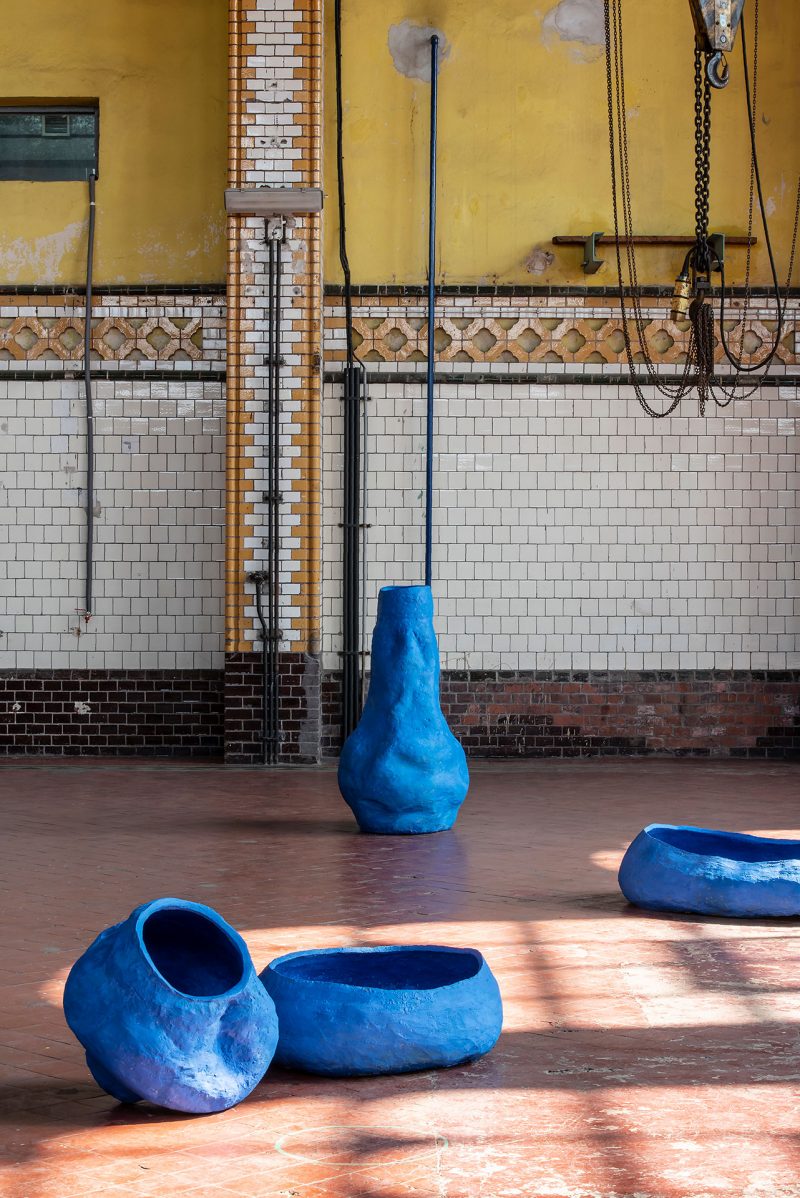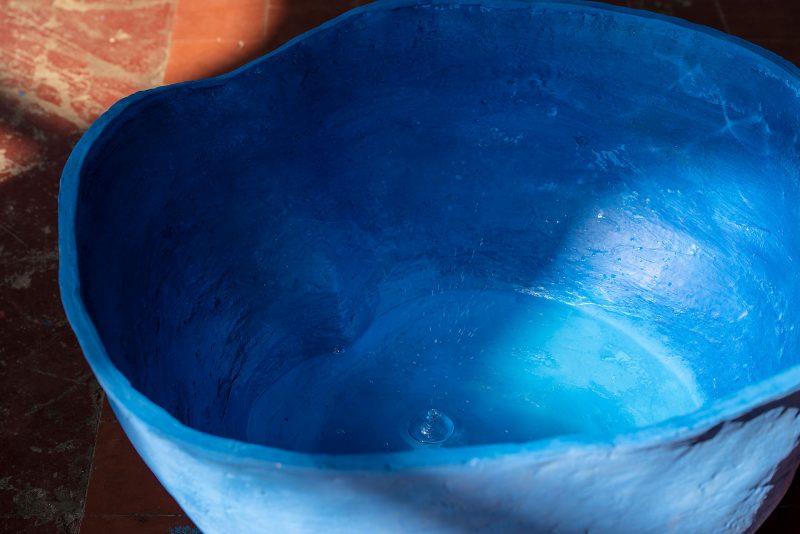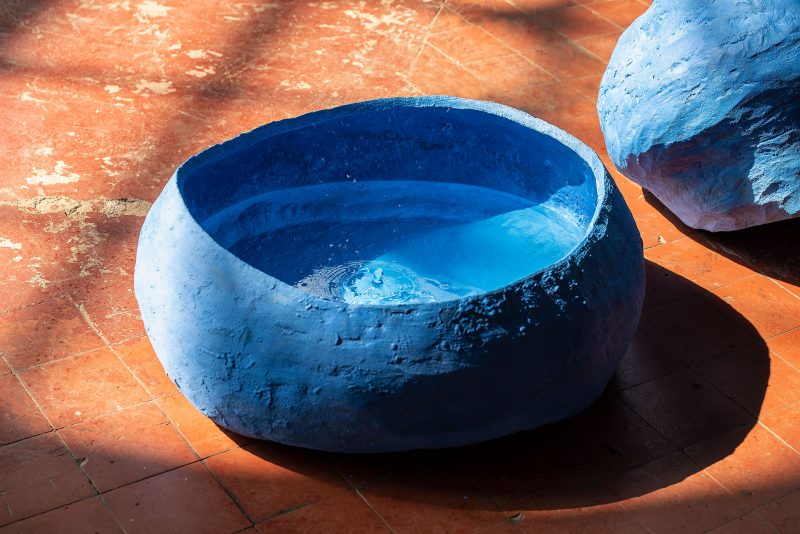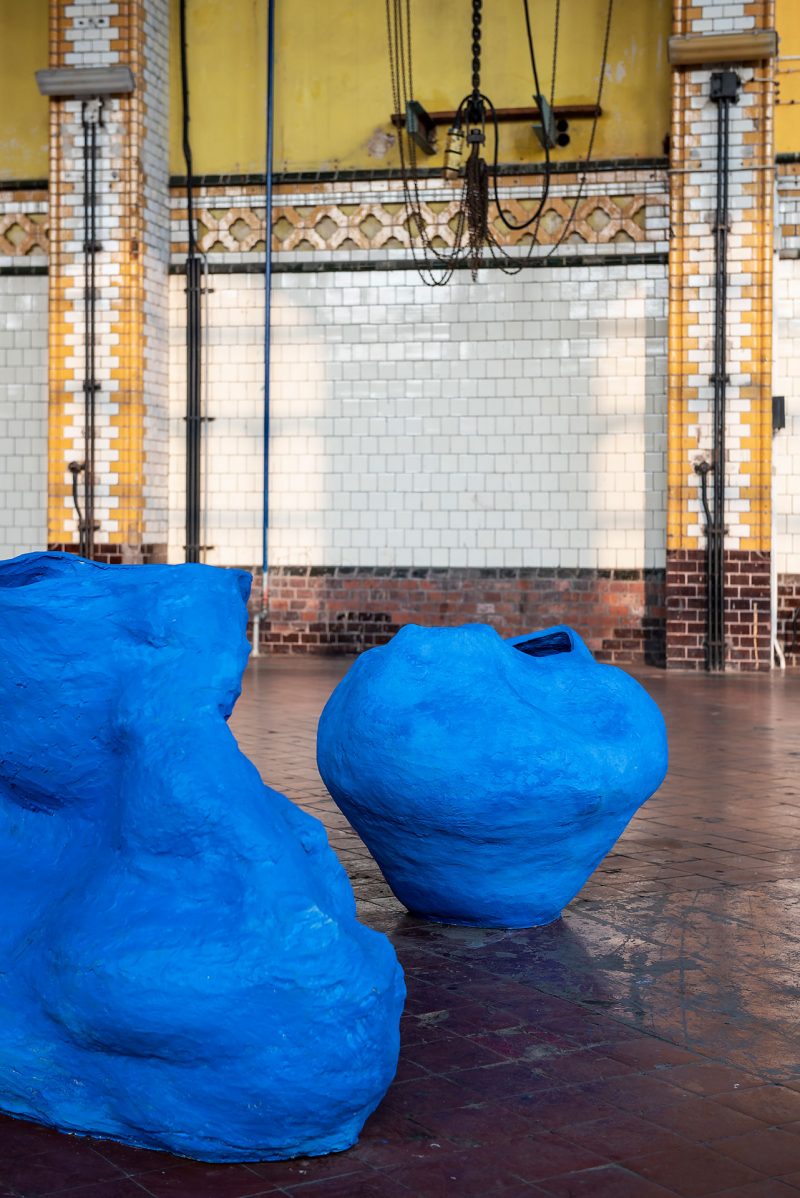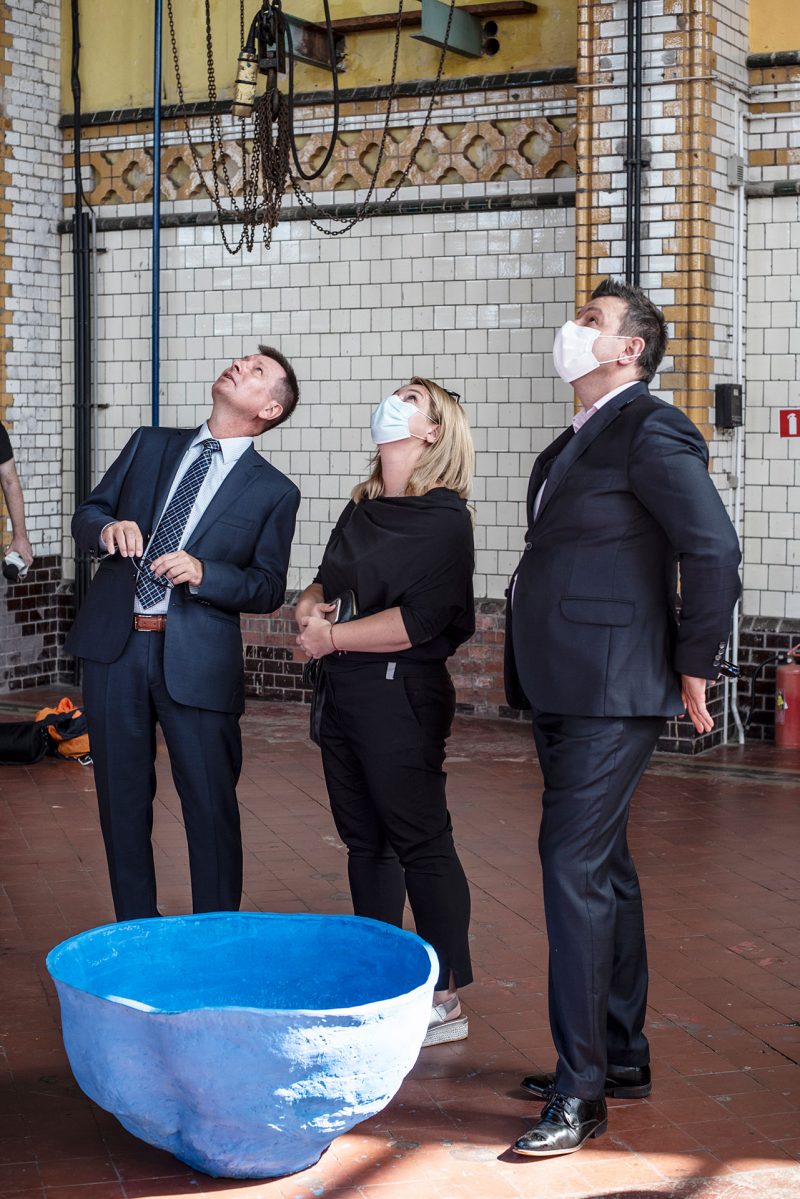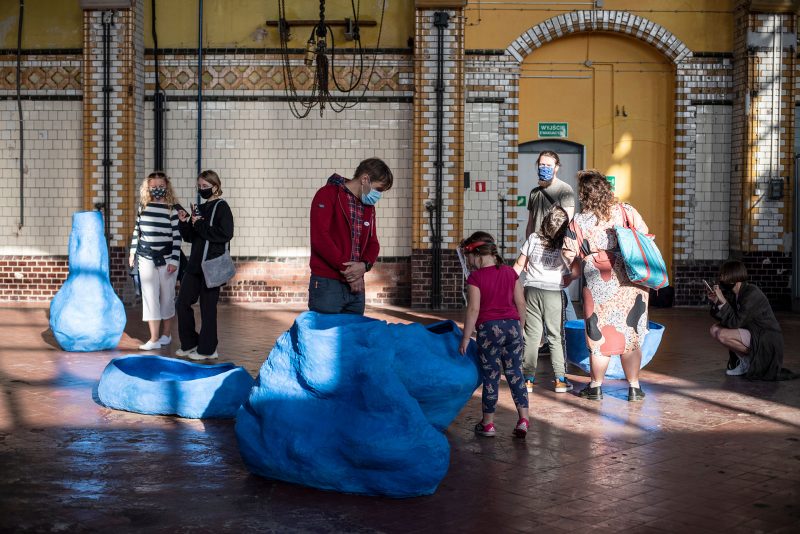Auditory Imagination Space, 2020
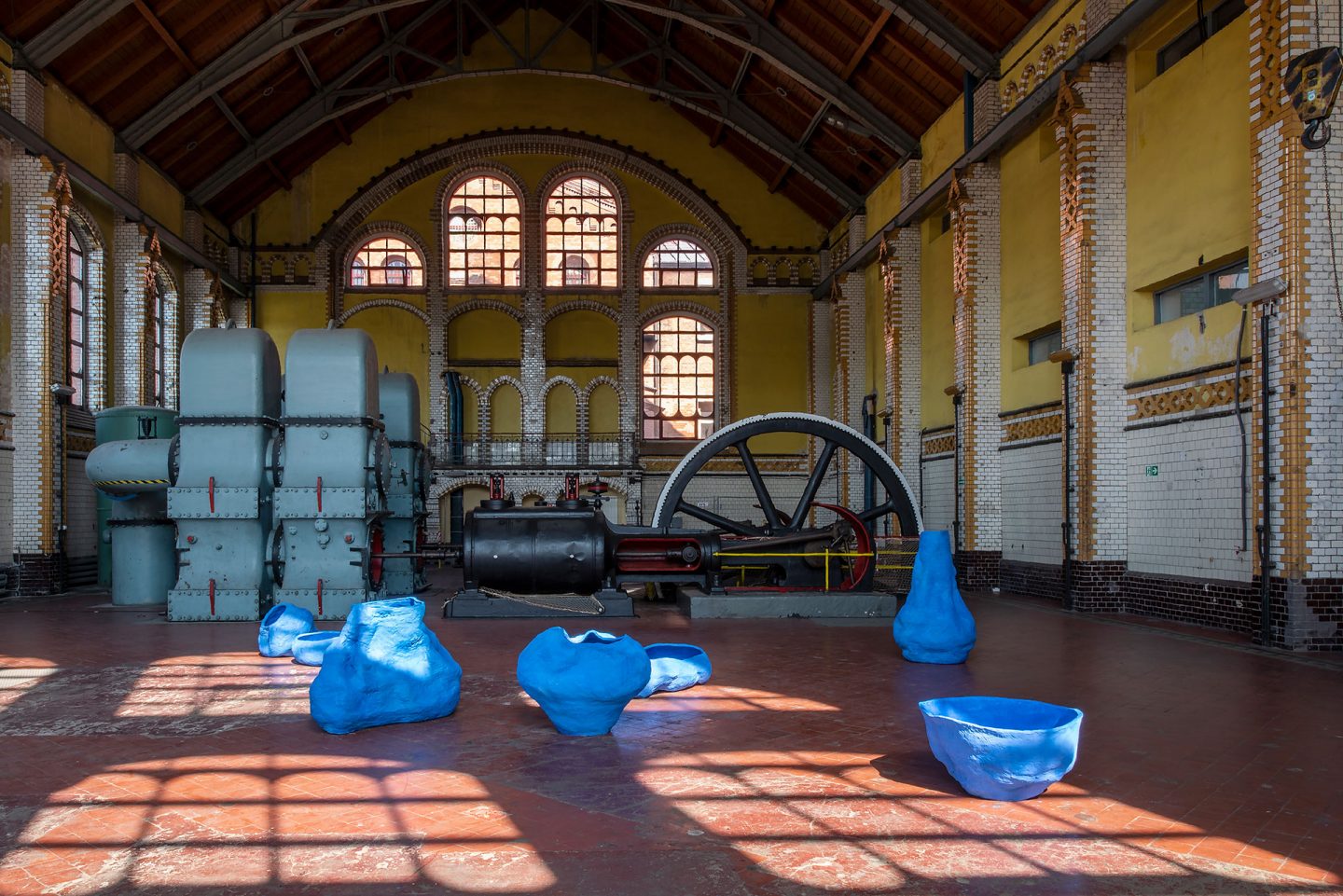
T.S. Eliot defined the concept of sound imagination as intuitive perception of sound that enables us to understand many perspectives. The sound sculpture – based on ceramic resonators, powerful reverberation of the pumping hall, and the composition of falling water drops – creates an acoustic environment that refers to the Japanese tradition of suikinkutsu. The sound not only determines the rhythm of the ritual, but also mediates communication between man and matter. “The drop becomes a prism that allows us to see anew […] how the hourglass measures time, which is quickly running out for us. Water connects all living things”* and it is essential for the proper functioning of living organisms, just like trace amounts of cobalt that make blue stains. Contemporary environmental movements drawing on the concept of soundscape pay attention to forms of interspecies communication, which can only be discovered in the process of in-depth listening. Water as an environment for the propagation of sound waves, including in the bands inaudible to humans, is a symbol of the hidden world. Contact with the sound installation is one of the forms of ear cleaning, which in the practice of soundscape is often defined as exercises, scores or other sound tuning activities that enable new, more careful listening. The installation develops the vision that emerged during the work on the collective exhibition *ZOEpolis – Design for Weeds and Pests.
Resonator structure consultant: dr hab. inż. arch. Ewa Cisek
photo: Małgorzata Kujda


